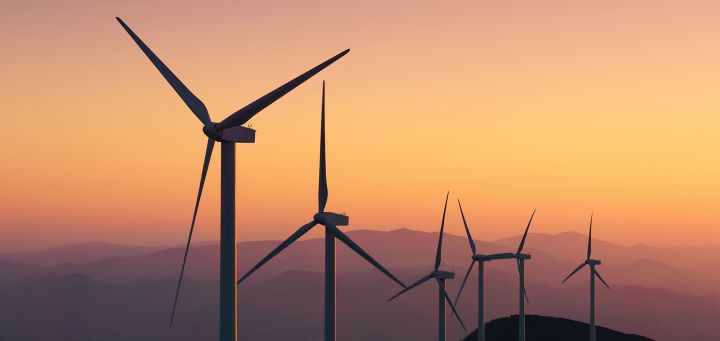If Joe Biden’s ambitious wind-turbine goals are realized, “thar’ she blows” could be shouted throughout the land. After all, the President’s initiative seems to be quite the bonanza for lubricants demand in the wind energy sector. Alas, if only that were true.
The plan is to develop large-scale wind farms along nearly the entire coastline of the United States, with Biden pledging to build 30,000 megawatts of offshore wind in the United States by 2030. Interior Secretary Deb Haaland has stated that her agency will formally begin the process of identifying federal waters to lease to wind developers by 2025.
So… with lubricant consumption tracking installed wind turbine capacity, how could this directive be anything but wonderful news for the lubricant industry?
“There’s more to it,” says Gabriel Tarle, a project lead in our Energy sector. “While wind energy is definitely on the upswing, the penetration of direct-drive turbines is also growing, which will significantly dampen the demand for lubricants. In fact, the reality is that lubricants demand is already taking a hit from this technology and is currently slightly lagging growth in wind energy installed capacity.” Direct-drive systems are more cost-effective, as they are lighter and require less maintenance. The only thing holding this technology back is the higher initial investment. Note that the U.S. Department of Energy has included direct-drive systems on its R&D investment list.
WHERE’S THE LUBE?
Wind Turbines with a Gearbox
There are a number of lubrication points in a variable-speed wind turbine with a multi-stage gearbox — which describes the configuration of the vast majority of today’s turbines. The good news is that this type of turbine eats up a tremendous volume of lubricants — hence, the assumed “hurrah!” regarding Biden’s announcement. The bad news, however, is that the turbine gearbox — which consumes 70% of the lubricants utilized — is this type of turbine’s weakest link.
The typical lifespan of a utility wind turbine is 20 years, but the gearboxes typically fail within 10 years. Given that the cost of replacing this colossal piece of equipment accounts for approximately 10% of the construction and installation expenditure of the entire wind turbine, this is an extremely expensive proposition, forgetting about the lengthy downtime and consequential loss in profitability.
WIND TURBINES WITHOUT A GEARBOX
Enter the relatively new kid in the water: the variable speed direct-drive wind turbine. Without getting too technical, all wind turbines utilize rare earth elements magnets, such as neodymium, in their generators. Wind turbines with a gearbox typically incorporate four to six of these magnets. However, if the number of magnets is upped to 100 or more, the need for a gear box is completely eliminated…as is the need for these vast quantities of lubricants.
Also increasing the interest in direct-drive wind turbines is that they contain a smaller number of moving parts, which translates into increased reliability and a reduction in frictional losses. Because the operational speeds of these generators are much lower, the generator is subjected to little, if any, wear. This significantly boosts its operational lifespan and enables it to handle the larger loads that will be required to reach Biden’s pledge of 30,000 megawatts of offshore wind in the United States by 2030.
HOW BAD IS THE NEWS FOR LUBRICANT MANUFACTURERS?
“Near term, the potential for increasing the share of direct-drive wind turbines is very small because only a handful of OEMs have mastered this technology,” says Tarle. “But the number of OEMs offering direct-drive systems has tripled in the last two years due to more customers demanding less maintenance, particularly because most wind-farm operations are suffering from chronic staff shortages.” In addition, direct-drive technology has improved dramatically over the past decade, including eliminating the need for rare earths for these magnets. As a result, these turbines have become much less expensive.
Cutting to the chase: While it likely will not happen tomorrow, demand for direct-drive wind turbines is set to accelerate. Again, because direct-drives completely do away with gearboxes, they have no need for gear oil — which has represented the lion’s share of the lubricants consumed in the wind energy sector. Thus, the expansion of direct-drive technology will profoundly impact lubricant consumption.
ONE FINAL BIT OF BUZZ-KILL
The penetration of direct-drive wind turbines is not the only wind-energy variable causing consternation in the lubricants industry these days. Typical wind turbine gear oils have an oil drain interval of four to five years. Advanced synthetic lubricants, which are increasingly being used in turbines, have proven to extend these intervals up to more than seven years.
For more information on the wind turbine lubricants market, inquire about the 2021 edition of our Lubricants for Wind Turbines: Global Market Analysis and Opportunities. The report is a comprehensive analysis examining lubricants for the wind energy market and providing details on important market segments in each country. It focuses on key trends, developments, changes, challenges, and business opportunities.
About this blog:
Why Biden’s Plans for More Wind Turbines Won’t Increase Lube Demand features insights from Gabriel Tarle, a Project Lead in Kline & Company’s Energy sector. He began his career at Kline almost a decade ago; in that time, he has worked on almost every project the company’s Energy sector has produced. This includes the entire supply chain of finished lubricants and related specialties, ranging from synthetic and mineral basestocks to synthetic and mineral/synthetic waxes and additives to automotive and industrial lubricants/bio-lubricants and process oils, in addition to fuel additives and automotive coolants. Tarle is currently focusing on new technology — EV fluids and 2040 modeling for PCMO and HDMO demand. He graduated from CEU Business School in Budapest with a Bachelor of Science degree in global management.
Press inquiries:
Lance Debler
Content Marketing Manager
Kline & Company
+1-973-435-3425

